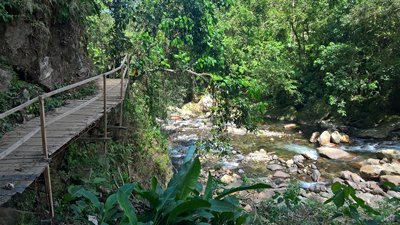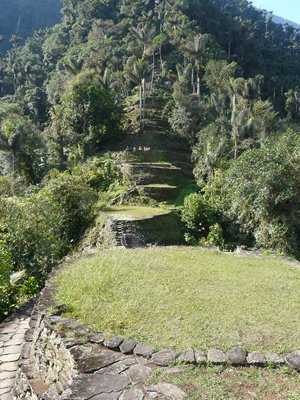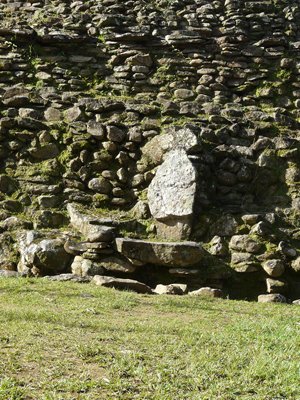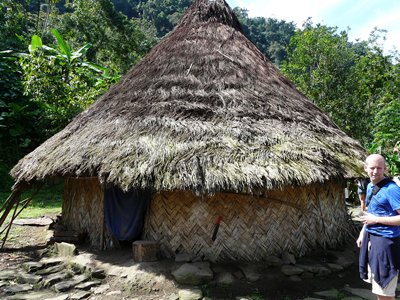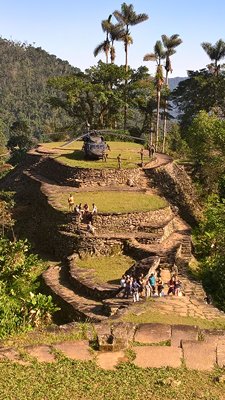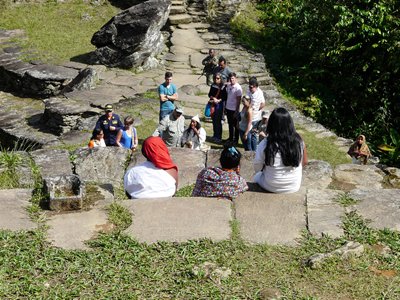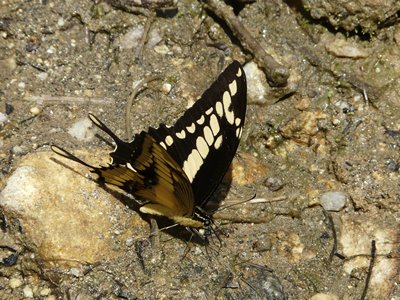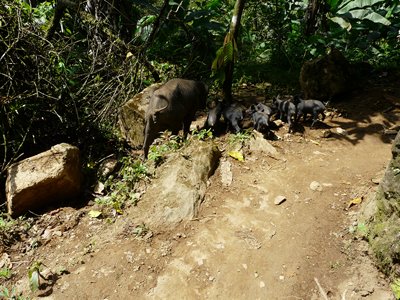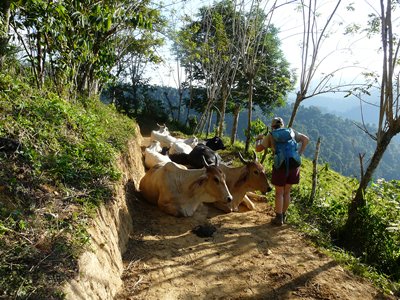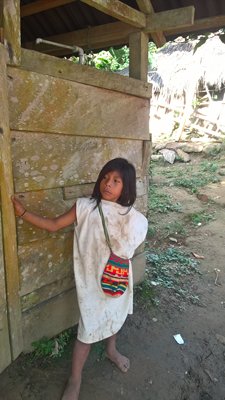Ciudad Perdida Trek, Days 3 and 4.

|
So day 3 and another 05.30 start, breakfast was over by 06.00 and we were raring to go. We were the second group away from the camp so timed that you are not in a long crocodile along the path and more importantly up the steps, all 1200 of them. We had about 1 km of riverside walk with walkways built out from the cliff and odd steps and handrails then the wading the river to start the steps, surprisingly all over very quickly.
Simply constructed walkways, better not to look too close.
The final steps Arriving at the lost city you are suddenly clear of the forest and into an area of hut bases and ceremonial circles which you are asked not to walk over but to stay on the paths. The indigenous Indians walk barefoot and use their paths as they believe that otherwise you damage the mother earth. The hut bases, made from stone, support the huts made from wood and palm thatch. Traditionally the dead are buried under the hut floors and this is where the grave robbers found gold artefacts. Some of these are in the museum in Santa Marta and are amazingly intricate lost wax castings from before 900 AD.
Ancient map of the area carved on rock. It shows the rivers and main tracks to the villages.
Hut bases which are also burial sites. The parts of the city which have been cleared are arranged in areas, general living, ceremonial and merchant, quarrying and manufacturing but there are a lot of areas as yet untouched in the surrounding forest. When it was inhabited the forest would have been cleared completely.
Shaman’s ceremonial seat Reconstruction of a Kogui’s hut. This is the womens hut where
the wife and female children live. The reconstructed huts are used by the Shaman and his famil.y When we were there a high level military officer was visiting with his family, the easy way by helicopter. This is how early visitors were brought in but as this damages the area it is only the archaeologists, military and VIPs who use this method everyone else walks.
Lost city with visiting military officer, local Shaman and his family. An absolutely amazing area with wonderful views of the surrounding mountains.
After about three hours we made our way back down to the last camp for lunch and then on to day 2 lunch stop for the night. Although overall we were losing height, we still had some long hard climbs up and of course as this was the same route in reverse we knew what to expect. On the way we saw a number of large and colourful butterflies, one snake (too fast to photograph), a family of pigs and a herd of cows.
Sarah confronts the cows On our last night we were invited to sit around the fire in the ceremonial hut and have some of the local culture explained to us by the owner of the camp, a Kogui Indian. This was of course in Spanish, and badly translated, so we only understood a small amount.
Kogui Indian boy, collecting money for the use of the toilet at final camp. The boys have the bags and the girls wear beads, otherwise they are dressed the same. Sunday was the final day and again saw us up early and off for the final walk, lunch in Mamey and the drive out, this time in a 4 wheel drive. |
